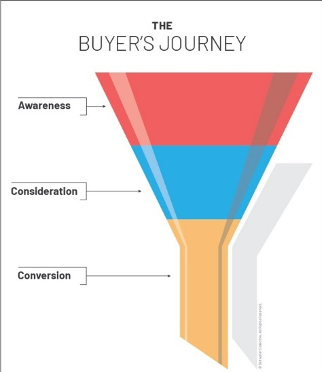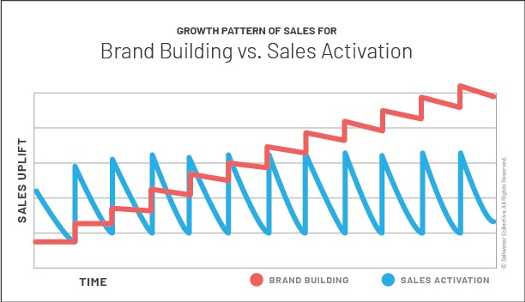As every business seems to be saying in their ads: “These are uncertain times.”
COVID-19 has spread across the country. People are social distancing. And as we stand at the beginning of a new recession, businesses everywhere are cutting costs wherever possible.
Including their marketing budgets.
But when marketing budget cuts are reactionary, rather than strategic, it can hurt your business. Because marketing is an investment — one with returns that keep your business running and growing, even through economic downturns.
So let’s talk about how to defend and, when necessary, strategically reduce your marketing budget during COVID-19. We’ll cover:
- Nearly 100 years of research that show the benefits of maintaining your marketing budget in a recession
- Why it’s important to fight the recession herd mentality
- Balancing short-term profits with long-term growth
- When and where budget cuts make sense
In short, we’ll equip you to not only defend your marketing budget, but to lay the groundwork for your company’s success in the years to come.
Marketing During a Recession: The Research

Alright, let’s start with the big question.
What does the research say about marketing during an economic downturn?
The answer, thankfully, is pretty clear: a majority of studies conducted in the past 100 years on the topic show that businesses benefit when they maintain or expand their recession marketing efforts.
Here’s a summary of that research, which was compiled and analyzed by Gerard J. Tellis, a well-respected professor of marketing, and Kethan Tellis:
- Cutting back on marketing dollars hurts sales during and after a recession.
- Businesses that maintain or expand their marketing tend to benefit from higher sales, market share, and earnings, during and after the recession (compared to businesses that reduce spending).
- The benefits gained from maintaining or increasing marketing spend during a recession persist for several years, even after the recession ends.
In other words, marketing during a recession not only mitigates losses, but drives growth for your business.
Recessions also tend to create opportunities for industry disruption. For example, according to a Bain & Company study, during the 1990-1991 recession “twice as many companies made the leap from laggards to leaders… as during the surrounding periods of economic calm.” And many companies have surpassed or gained ground on competitors during recessions with the help of marketing, such as when Kellogg overcame Post during the Great Depression, or during the 2000 recession, when Target grew profits by 50% by pairing a 20% increase in marketing spend with smart business tactics.
But why does this happen? Why, when the economy is hit hard, fewer purchases are being made, and businesses everywhere are tightening their belts, are you capable of growing by maintaining or raising your marketing budget
Because You’re Willing to Fight the Herd Mentality

The motivation to cut back on marketing budget in times like these is understandable. There’s a lot of uncertainty, so we take control by cutting costs wherever we can. We see other businesses making similar decisions with their marketing budgets, both within and outside our vertical, and that reinforces our decision.
But it’s important to realize that even though cutting your marketing budget can be strategic (as we’ll discuss later), many businesses are doing so as a gut reaction. And when a lot of businesses cut back on ad spend, the marketing landscape changes in two key ways:
- There’s less noise from competitors, making it easier for your message to stand out.
- The costs of ad placements go down, making advertising more affordable.
That means your marketing not only has the chance to stand out, but to do so more affordably. We’re already seeing this happen on platforms like Facebook, which saw a 50% drop in CPM for the final week of Q1 compared to last year (in spite of the fact there were twice as many impressions, due to everyone self-isolating and engaging online).
This landscape is particularly conducive for ensuring your share of voice exceeds your market share, which has been shown to correlate with business growth in both B2B and B2C contexts. Plus, all that marketing sets you up for greater success after the recession ends. When customers are ready to spend again at pre-recession levels, yours will be the brand on their minds. Your competitors, in contrast, will be stuck playing catch up.
Fortune favors the bold, and convincing stakeholders to resist the herd mentality of your industry, grounding yourself in research, and implementing sound marketing strategy are the best ways to keep your business growing through economic hardship.
Balancing Short-Term Profits with Long-Term Growth
Even in the best of times, businesses have a tendency to rely too much on short-term or last-interaction conversion metrics to judge the success of individual marketing tactics. During economic downturns, that mindset escalates, leading to detrimental reductions in brand investment — such as awareness campaigns, content production, and the various efforts that make up the awareness and consideration phases of the buyer’s journey.

That becomes a problem, because those efforts feed the productivity of bottom-funnel conversion tactics and are vital for the long-term growth of your company.
As shown by Les Binet and Peter Field, businesses need to balance their marketing budget between long-term brand building and short-term sales activation. Why? Because when businesses stop investing in their brand and put all their efforts into generating transactions, they see immediate profits, but not the same growth over time.
Only brand investment can create consistent, long-term growth.

While Binet and Field generally recommend 60% of marketing budget be spent on brand and 40% on sales activation, your exact mix will vary depending on your industry and current context.
For example, while your business may want to promote long-term brand growth, if this recession is hitting sales particularly hard, you might conclude that a greater percentage of budget than usual needs to go to sales activation as a short-term survival tactic.
But on the other hand, recessions tend to make customers wary of unnecessary expenses, which in turn lengthens the buyer’s journey. That means in order to effectively generate sales, your business might need to invest more than ever in branded content to continually nurture customers toward a successful conversion.
It’s a tough balance to strike, and it will always be unique to your business and audience. If you (or your stakeholders) want to tip the scales toward sales activation, however, just keep a close eye on those conversion metrics to be sure your reduced brand efforts aren’t hurting sales.
When and Where Marketing Budget Cuts Make Sense
In an ideal world, maintaining your marketing budget would be as simple as waving a wand and making it so. But when cuts are demanded from above or if the funding simply isn’t there because of reduced sales, the best you can do is make smart, strategic cuts to your budget.
Here are some suggestions.
Cut back on low-performing initiatives
When cutting costs, start with the campaigns that aren’t performing well so you can prioritize the ones that are.
That being said, remember you aren’t comparing apples to apples. Bottom-funnel advertising, for example, is going to have an inevitably higher conversion rate than, say, organic social or blog posts, and that’s because they serve different phases of the buyer’s journey.
So yes, cut back on low-performing efforts, but remember to judge those efforts according to their purpose, context, and relevant KPIs.
Invest in fewer channels, more deeply
When facing a reduction in budget, be careful not to spread your marketing too thin. Diluting your funds across too many channels can hurt performance and (since there’s less data) make it difficult to measure success. Instead, consider reducing the total number of channels so you can invest more deeply and effectively in the ones that remain.
Remove inefficiencies in your process
Every marketing team, over time, can develop inefficient processes and technologies, whether it’s software subscriptions nobody needs or a creative approval process that leads to unnecessary (and costly) rounds of revision. So examine your processes and tools, then streamline everything to reduce costs.
Repurpose your content
Content is a vital part of the customer journey, and a great way to produce a lot of it quickly and affordably is through repurposing.
For example, let’s say you write an in-depth white paper. You can repurpose that content into blog posts, emails, and social posts, and if it proves popular, you could even use it as the basis of a video, which could be broken into digestible soundbites for distribution, and so on.
Always get the full mileage out of your content, especially during a recession.
Take advantage of low ad costs and reduced competition
As I wrote above, recessions lead to fewer advertisers in the market, which results in lower costs and less noise. So take advantage of both. If you can’t reinvest your ad placement savings, hold onto them, and if your competitors greatly reduce their marketing, consider reducing your own presence just enough to stay ahead in terms of share of voice. That way you’ll maintain your competitive edge without breaking the bank.
Reduce ad spend if there are failures in your supply chain
If your supply chain is disrupted due to COVID-19, temporarily reduce ad spend to better match what you’re capable of producing. For example, if you continue to heavily invest in sales activation when there’s not enough product or if deliverability is down, you’ll only hurt your relationships with customers when you fail to follow through.
Your Marketing Budget is Worth Defending
Remember. Marketing is an investment, and even in today’s context, it’s an investment that sets your company up for growth and success.
So defend your budget. Make strategic cuts when necessary.
And stay optimistic.
These times are uncertain, but your marketing doesn’t need to be.
Continue the conversation with us on Facebook, LinkedIn, or Twitter.
Back